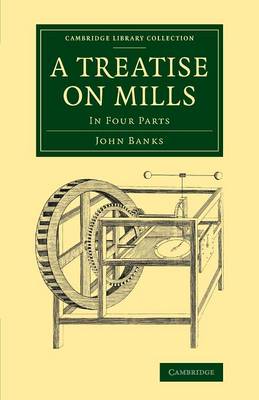Cambridge Library Collection - Technology
2 total works
From the 1770s onwards, John Banks (1740–1805) taught natural philosophy and gave courses of public lectures across the north west of England. Much of his work aimed to show engineers, mechanics and artisans how they could benefit from expanding their practical and theoretical knowledge. In this 1803 publication, Banks ranges across mechanics, hydraulics and the strength of materials. He considers various designs for important industrial machines, such as watermills, pumps and steam engines, offering calculations of their power. Drawing on his own experiments, as well as those of others, he shows readers how to estimate the strength of wooden and iron beams, and how to calculate the airflow from a pair of bellows. Diverse in its topics, the book sheds light on how rational calculation came to be applied to the machinery of the industrial revolution. Banks' Treatise on Mills (2nd edition, 1815) is also reissued in this series.
From the 1770s onwards, John Banks (1740–1805) lectured on natural philosophy across the north-west of England. Much of his work aimed to show engineers, mechanics and artisans how they could benefit from expanding their theoretical knowledge. First published in 1795, and reissued here in its 1815 second edition, this work shows how to calculate the power limits of waterwheels, millstones and other commercially important machines. In the author's words, a key aim is to avoid wasted effort 'in attempting what men of science know to be impossible'. Starting with the mechanics of circular motion, he leads the reader step by step through a series of worked problems, showing the theory's practical applications. He then moves on to his experiments on the flow of water, and uses his results to better analyse the various types of waterwheel. Banks' On the Power of Machines (1803) is also reissued in this series.

